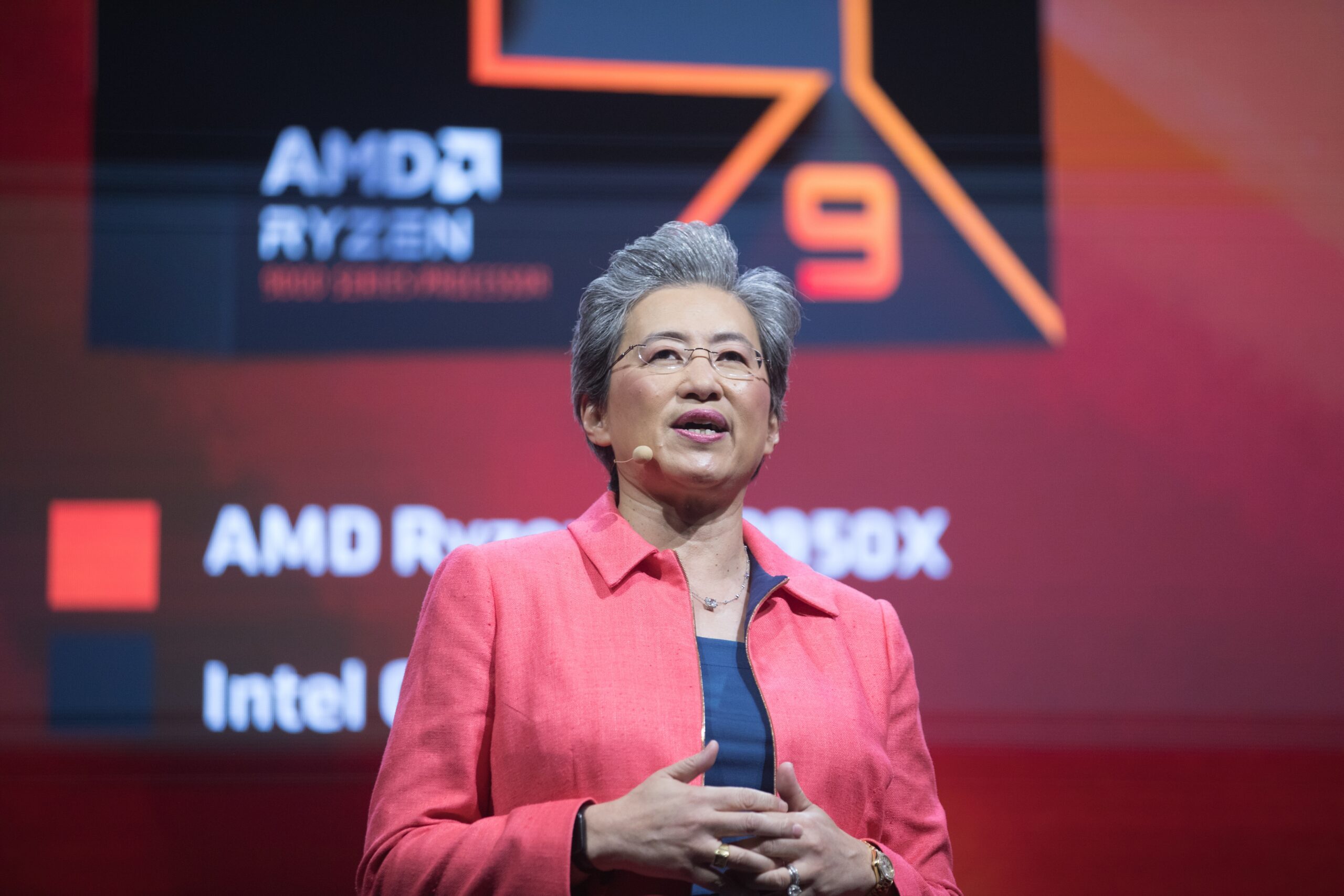I talk a lot about Nvidia. And for good reason…
Just last month, the company posted a $44 billion quarter — one of the largest in the history of U.S. tech companies.
Nvidia’s data center business alone made more money than many Fortune 500 companies.
The company is the market leader in cutting-edge AI technology. And when Nvidia’s CEO Jensen Huang speaks, it often ends up in the news.
But this week, one of Nvidia’s biggest competitors was the one making headlines.
AMD’s CEO Lisa Su turned heads at the company’s “Advancing AI” event when she said she expects the market for AI compute infrastructure to soar past $500 billion in the next three years.
Source: Wikimedia Commons
But she didn’t stop there.
Despite Nvidia being the 800-pound gorilla in this space, Su suggested AMD has a real shot at taking some of the AI giant’s market share.
Based on what AMD showcased during the event, I believe she might be right…
AMD’s Threat to Nvidia’s AI Dominance
Su went on to reveal a new chip from AMD called the MI355X that’s designed to go toe-to-toe with Nvidia’s industry-leading AI processors.
The MI355X is AMD’s most aggressive AI chip yet.
Source: AMD
It’s a dense, high-performance accelerator that’s built to handle the kinds of massive workloads companies like OpenAI, Meta and Microsoft demand.
AMD claims its new chip series is faster than Nvidia’s counterparts and represents major gains over earlier versions.
That alone is exciting. But I’m even more intrigued by how AMD intends to compete in this space.
Rather than mimicking Nvidia’s tightly integrated ecosystem, AMD is leaning into open standards.
It’s offering a more modular, flexible approach for companies that want control over their stack.
To that end, Su previewed AMD’s new “Helios” rack system, a full end-to-end AI platform built around this open infrastructure.
She called it: “a game changer.”
These racks include everything a supercomputer needs, including its brains (CPUs), muscles (GPUs) and fast internet connections (NICs), all working together.
It’s a solution aimed at both frontier model training and large-scale AI inference. And it caused my Spidey-sense to trigger.
Because when it comes to AI training, one company prefers to play by its own rules.
Of course, I’m talking about Tesla.
On May 20, Elon Musk told CNBC that Tesla and xAI would continue buying a lot of GPUs from Nvidia, but also “some from AMD” and potentially others.
I don’t think it’s crazy to read more into that statement.
You see, Tesla is currently building out massive compute clusters to support its Dojo supercomputer and power its Optimus humanoid robot.
The scale of this effort is enormous. And it requires hardware that’s fast, affordable and flexible.
Nvidia offers best-in-class performance, no question. But it comes bundled in what some engineers call a “black box.” In other words, it’s a closed system where Nvidia controls nearly every layer, from the chip to the software stack to the networking gear.
For a company like Tesla — which has a long history of building in-house and optimizing from the ground up — that kind of vendor lock-in might not be ideal.
That’s why AMD’s open approach makes sense to me here.
It would let Tesla customize its AI infrastructure without being tied to one proprietary ecosystem.
It could also lower costs at a time when GPU supply is still constrained and prices remain sky-high.
If the MI355X delivers even close to Nvidia’s performance, Musk may have every reason to start shifting to AMD’s products.
That’s especially true for Optimus, which Musk said could be “worth more than [Tesla’s] car business and worth more than full self-driving.”
Source: Wikimedia Commons
It’s also worth noting that Tesla has made a habit of quietly adopting AMD chips for in-vehicle applications over the past few years.
So this wouldn’t be the first time Musk gave Su’s team a shot.
Here’s My Take
AMD’s stock has fallen well below last year’s highs.
Source: Yahoo Finance
But that could soon change.
I don’t believe Tesla will abandon Nvidia overnight.
But AMD just made its most convincing pitch yet, with a strong product and a strategy that gives companies like Tesla more control.
I believe it’s only a matter of time before we could see Elon announce a major AI deployment built on AMD hardware.
And the 800-pound gorilla might be in for a serious fight.
Regards,
Ian King
Chief Strategist, Banyan Hill Publishing
Editor’s Note: We’d love to hear from you!
If you want to share your thoughts or suggestions about the Daily Disruptor, or if there are any specific topics you’d like us to cover, just send an email to [email protected].
Don’t worry, we won’t reveal your full name in the event we publish a response.
So feel free to comment away!
Disclaimer: This story is auto-aggregated by a computer program and has not been created or edited by finopulse.
Publisher: Source link








